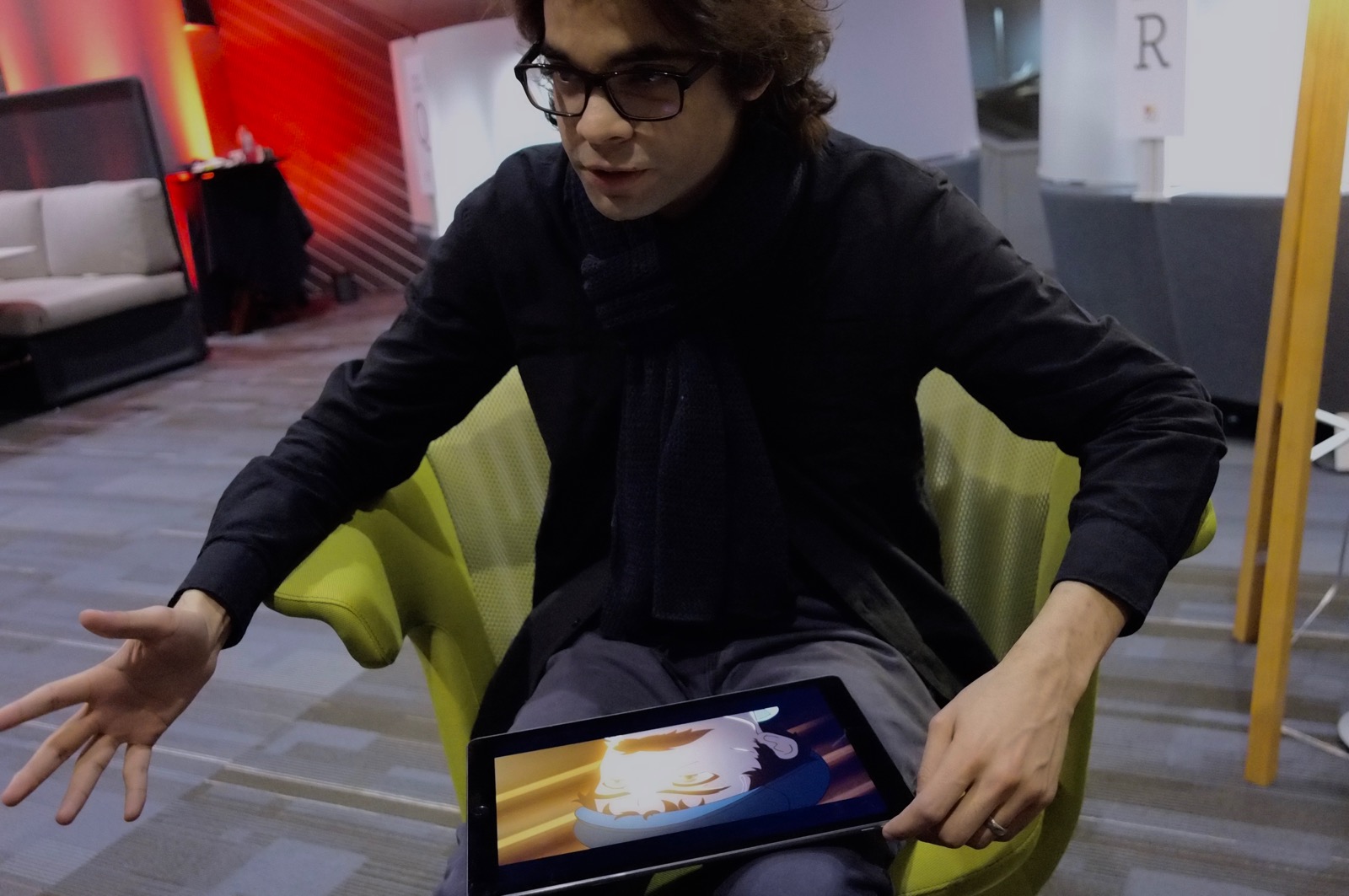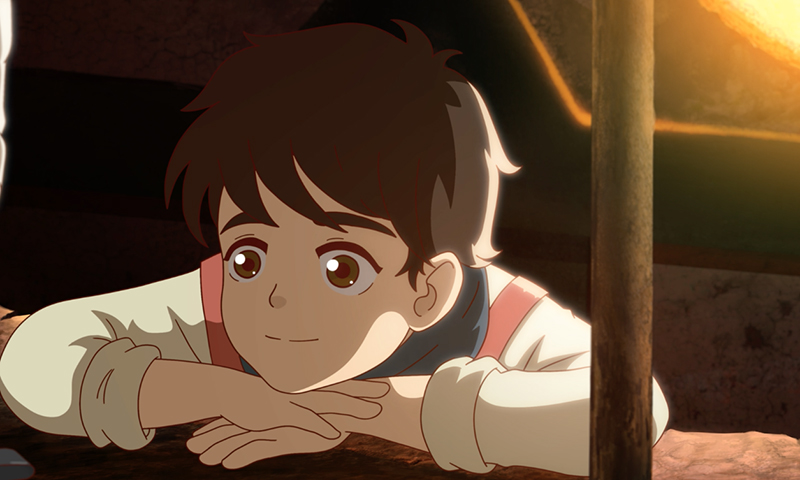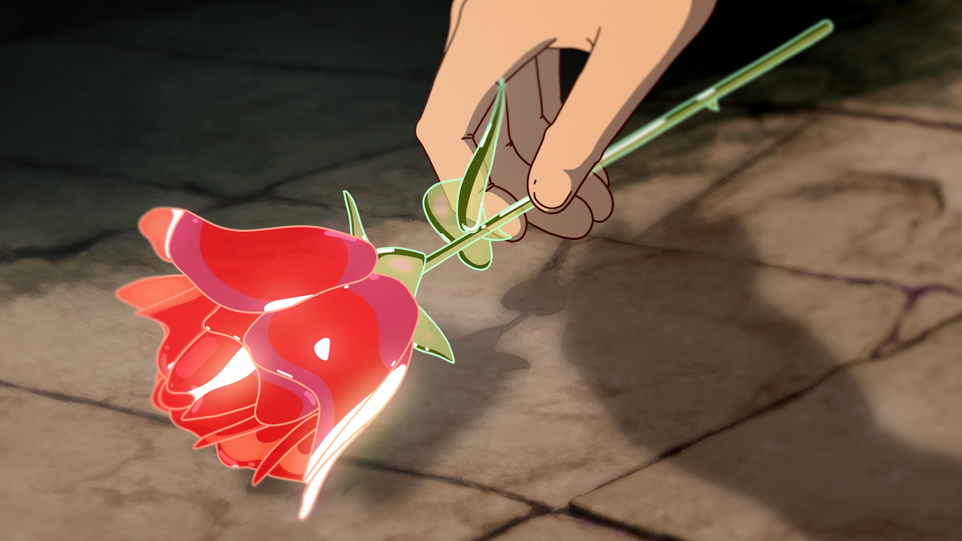Usman Riaz’s “The Glassworker”
Pakistan’s first hand-drawn animated film hits Kickstarter


At TEDGlobal 2012, a then-21-year-old Pakistani musician and artist named Usman Riaz stunned onlookers with an otherworldly percussive guitar demonstration, and further captivated them with the knowledge he learned how to do it all online. Riaz, now a Senior TED Fellow and majoring in composition at Boston’s prestigious Berklee College of Music, has ventured forth into another creative field—and his end goal is a world first. Riaz has written and storyboarded Pakistan’s first ever hand-drawn animated film. He also assembled the team of animators to help make it a reality. The project, known as “The Glassworker,” recently launched on Kickstarter to seek funding. The film’s story—a young glassblower learning how fragile life can be—is compelling, beautiful, honest and beautifully drawn. And the fact that this project is being done in Riaz’s home nation, and conducted by correspondence thanks to the power of the internet (all while the artist fits it between his studies) demonstrates its power. We spoke to Riaz to learn more about “The Glassworker” and why he embarked upon this project.
Can you tell us a bit about the origin of “The Glassblower”?
I’ve always been fascinated by the actual art of glassblowing and thought it was incredibly beautiful. Not only the end result, but the whole process is so interesting. First, I thought about filming it because I’ve directed two short films before this. Then, I considered doing animation but I thought it would take too long. Finally, I realized we had to do this. I have to animate this because I am an artist. The animation part is not hard, it just takes a long time. So I formed a studio. With animation, we can really accentuate and make the process look even more beautiful. We can control the colors and add lighting effects. Bringing it together is visually very interesting.
Lacking animation resources, how did Pakistan come to be a part of the solution?
Well, the thing is, there’s no animation industry in Pakistan, at all. There are a lot of people who love it and and do it on their own, but no one has come together to make an animated film. This struck me as strange when I was younger. Now I realized, if no one is going to do it, I will. The cool thing about there being no industry is that there are no rules. We could do whatever we wanted. I attended workshops and found cool people. It snowballed. I found a talented animator who knew another who knew someone else who knew someone else and suddenly we had a team.

How are you funding this?
This is a passion project, as you know. I was funding it myself and still am. Hopefully Kickstarter can alleviate some of that. Even if it doesn’t happen I am going to make the film happen, even if I have to find out how to do it myself.
Are you all working together already?
Yes, we have eight people working in Pakistan and eight people in Malaysia and the UK. It’s a very global online studio. I submit storyboards and the animators animate. I provide feedback and send to another team. It will obviously change in the future but we currently we are working around computers a lot.

You came up with the concept, wrote the story and are leading the animation team and you are also composing the music?
The way I am doing this, I am approaching it in the way the people I look up to made their films: the Japanese animators. They draw their own storyboards. The interesting thing is, in Hollywood, the way films are made is so different. There’s a separate writer and director and a storyboard artist and a character designer. They all work together to plan out each scene. But in Japan, the director usually has to be able to draw. They draw their own storyboard and plan their own characters and the layouts for the actual scene. My life of making things this way is easier, because I have to communicate less. I draw everything myself. I have a wonderfully talented team working with me, but I am alleviated from a lot of the struggle. I am really enjoying it. I’ve been doing it since I was small, drawing my own comic books. This is just a step up from what I’ve always been doing.
Do you see this as the first of many potential projects to come out of this studio?
Yes. A short term goal is to make the film: Pakistan’s first animated film. The longterm goal is to establish the studio in a country that has no animation industry, and let it be the first hand-drawn animation studio. Hopefully, we can keep getting funded and make more.
Can you talk about your process?
It is fun to do this. I have never stopped and thought I have never done this before how do I do it. We all know how to do it. We’ve all watched so many movies. That is exposure in itself. Color gradients and stuff like that you have to learn, but everyone knows how to tell a story. That’s how I approach my work.
How are you using technology to help make “The Glassblower” come to life?
When I was selected to be a TED Fellow in 2012, my TED talk was about how I used technology to further my learning. I played five different instruments on stage. I was trained in classical piano but all the other instruments I learned by watching them played online. I believe that is how people learn. When you are small you watch other people talk and you listen and learn. With that, the internet played such a role in my musical journey and artistic journey. With animation, it’s a development of that. We are located all over the world but it doesn’t matter because we are just a few clicks away from each other.
You can support “The Glassworker” on Kickstarter, where a $25 pledge guarantees an HD digital download of the film upon its completion.
Portrait by Josh Rubin, stills courtesy of Usman Riaz












